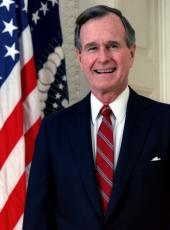
Message to the Congress Transmitting a Report on Aeronautics and Space Activities During 1987
To the Congress of the United States:
I am pleased to transmit this report on the Nation's progress in aeronautics and space during calendar year 1987, as required by section 206 of the National Aeronautics and Space Act of 1958, as amended (42 U.S.C. 2476). Aeronautics and space activities cut across many sectors of our Federal Government, and this report highlights the major programs of the 14 contributing departments and agencies, with the National Aeronautics and Space Administration (NASA) and the Department of Defense (DOD) the major contributors.
In 1987, as furtherance of the recovery of our space launch capability, studies were completed concluding that a mixed fleet, consisting of the space shuttle and expendable launch vehicles, would be required for continued U.S. operations and access to space. Remote sensing capability continued to make impressive progress to further our understanding of the ozone depletion in the atmosphere, the impact of weather patterns on agriculture, and the damage to the forest ecosystem caused by acid deposition. A new initiative was launched to study the Earth system, including the oceans and the atmosphere, on a worldwide scale.
During the year, technology products continued to flow to the user industries. Results of aeronautics research reached a new level of application. The NASA-developed computational fluid dynamics techniques coupled with drag reducing concepts were applied to hull/keel design. Aircraft safety continued to receive priority, with requirements being levied for equipment to alert pilots of collision threat.
The defense of our country was enhanced by the successful demonstration of target interception in space. Great strides were made as the United States moved closer to agreement with its partners in the permanently occupied space station project. Bilateral and multilateral discussions on space arms control were held in Geneva. Because of advances made in worldwide communications, information on space technology and exploration is now reaching 134 countries and in 44 languages.
There is great promise in our Nation's vision to be at the forefront of advancement in aeronautics, space science, and exploration, for it is this advancement that ultimately makes a significant contribution to the quality of life on Earth. Our challenge is to continue on an aggressive course of exploration that will provide the international leadership and climate for cooperation for which this great Nation has become so well known.
George Bush
The White House,
February 1, 1990.
George Bush, Message to the Congress Transmitting a Report on Aeronautics and Space Activities During 1987 Online by Gerhard Peters and John T. Woolley, The American Presidency Project https://www.presidency.ucsb.edu/node/263854
